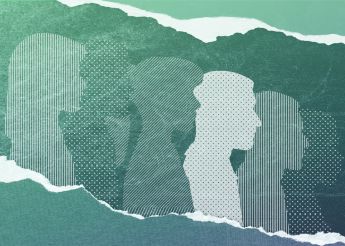JL. We call WayBack the foundation for life after incarceration. I was formerly incarcerated, as were all those who work for WayBack. The main purpose of our organisation is to help former prisoners reintegrate into society. We visit them during their incarceration to establish a relationship and begin the preparations for their release. The Norwegian welfare system is quite good, but the problem is the gap between the prison and the community. What we’re doing is bridging the gap between the two, using the experience we have of our own transition back into society. The key focus is on providing support and stability during transitional periods to help individuals feel safer and increase their chances of success.
Transitions in life, such as changing partners, jobs, or homes, can be challenging and increase the risk of relapse into negative behaviours like drug use or crime. By minimising the number of transitions and offering support, such as helping individuals reconnect with the community and improve social skills, we increase the likelihood of positive outcomes.
The average membership duration is around a year, but individuals can remain members for as long as they want. We believe that it’s best to start working with prisoners as early as possible, but we know that this is also a matter of capacity. We normally start three to six months before their release, regardless of the total length of their sentence. We give motivational speeches and hold reflection groups of up to eight people. For those who are interested, we conduct an interview and have them sign an agreement to become a member. We start by giving them a pie chart with five challenges: housing; economy and debts; health (mental disorders, drugs, etc.); work; and network and friends. Together, we discuss what we should tackle first and how. Then, we contact the relevant agencies, such as the health or education services, to establish a link and initiate procedures. The lack of proximity between prisoners and the community is a major obstacle to these initiatives. Prisoners should serve their sentences close to where they live, where they have family and where they can access municipal services.
Most of our members also have financial debt, so we try to settle them by reaching agreements with creditors. Financial issues are a major source of stress. We try to ensure that people have an income, somewhere to live, and a new social circle so that they don’t reconnect with their old criminal network. Typically, they find an apartment, but it’s empty, so we try to come up with solutions. We find second-hand furniture, go shopping together and get a trailer or car to transport the furniture. We also invite them to WayBack to celebrate their release and make plans for the future, but also to keep in touch and maintain the relationship.
The organisation’s strength lies in the lived experiences of its members. It allows them to better understand and connect with prisoners who are going through similar situations. We act as mentors or sponsors, rather than social workers or family members. Many of these individuals struggle with socialising and knowing what to talk about, so we try to address that through activities like walking and engaging in nature which facilitate better connections than traditional office settings. While the specific triggers for change may not always be clear, the emphasis remains on empowering individuals to take control of their lives and make their own decisions. I always tell them: “I can’t decide for you, I can’t tell you how to live your life, but I can give you examples of what I’ve done and what others have done”. It’s important for them to know that it’s their decision, not ours, and that the responsibility for change lies with them.





